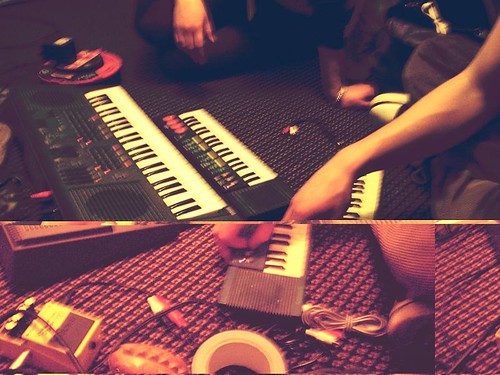Hugh S. Manon and Daniel Temkin recently published a great paper on glitch art called “Notes on Glitch“. It reads more like a collection of thoughts than one concise paper, but it’s still an awesome read.
Glitch Safari (from myself and noteNdo) and Dataface both receive a mention in the gallery, along with other awesome works.

Out of all of the notes there were a couple of points that stood out to me, which I’d like to add my own thoughts to.
24. At the same time, because glitch artists may optionally “save a copy” before making alterations, there is something disturbingly low-stakes about any particular attempt at glitching. One wishes this were not so, since the appearance of glitch is highly untame. Driven as it is by limitations of all sorts, many of the most agitating examples of Modernist art—works which, in Susan Sontag’s terms, “overstrain” the medium7—would never have existed with an undo button at their creators’ disposal. Indeed the art historian of the future will recognize the rise of unlimited, one-click “undo” as being on par with the most major technological and phenomenological changes in the history of representation.
At GLI.TC/H 2010 Riley Harmon introduced me to the game lose/lose from Zach Gage. In this game destroying an alien results in a random file being deleted from your computer.
lose/lose from zach gage on Vimeo.

My intention with this shot was to document the day accurately but instead I got a glitched photograph (the error occurred within the camera). Luckily, I received a positive response from AAS and others, so I decided to keep it. Had the photo been of more importance – for example, a picture of a wedding – then greater emphasis would be placed on producing clear, error-free photographs, and there would be greater disappointment and distress if any errors did occur.
So, intention comes into it quite a bit…
49. Glitch has embraced the open-source mentality of sharing knowledge, which is rooted in the DIY tradition of punk. When a glitch artist refuses to reveal how work was made, it not only raises a question of whether it is “really” glitch—as opposed to a Photoshopped simulation—but also whether the artist is selfishly hiding their technique in a refusal to contribute to the collective knowledge. This all reflects an anxiety over authenticity and the underlying politics of glitch—something not strictly defined, but which favors cooperation and community over the proprietary motivations of any individual auteur.
My practice is deeply rooted in open source software and collaborative practices. As such I always endeavour to share the source-code to all of my work. This doesn’t always happen immediately, but I eventually often write a tutorial, explain the process behind the artwork, or package the code that created the artwork into something reusable. As a result, I don’t look favourably upon (glitch) artists that are very secretive about their methods.
With that said, I do not want to become a help-desk for those wanting to do glitch art, which unfortunately has happened a lot in the past. Circuit bending and glitch art are very much about discovery, and I feel that holding someone’s hand and taking them through the A-Z of glitch wont result in an artist discovering their own style or reasons for doing glitch art. Tutorials that I write on my site aren’t meant to be a definitive guide on how to glitch, more of a starting point for the artist’s own personal discovery.
There’s more I could say about many of the other notes in that paper, but I’ll save that for discussions over dinner 😉